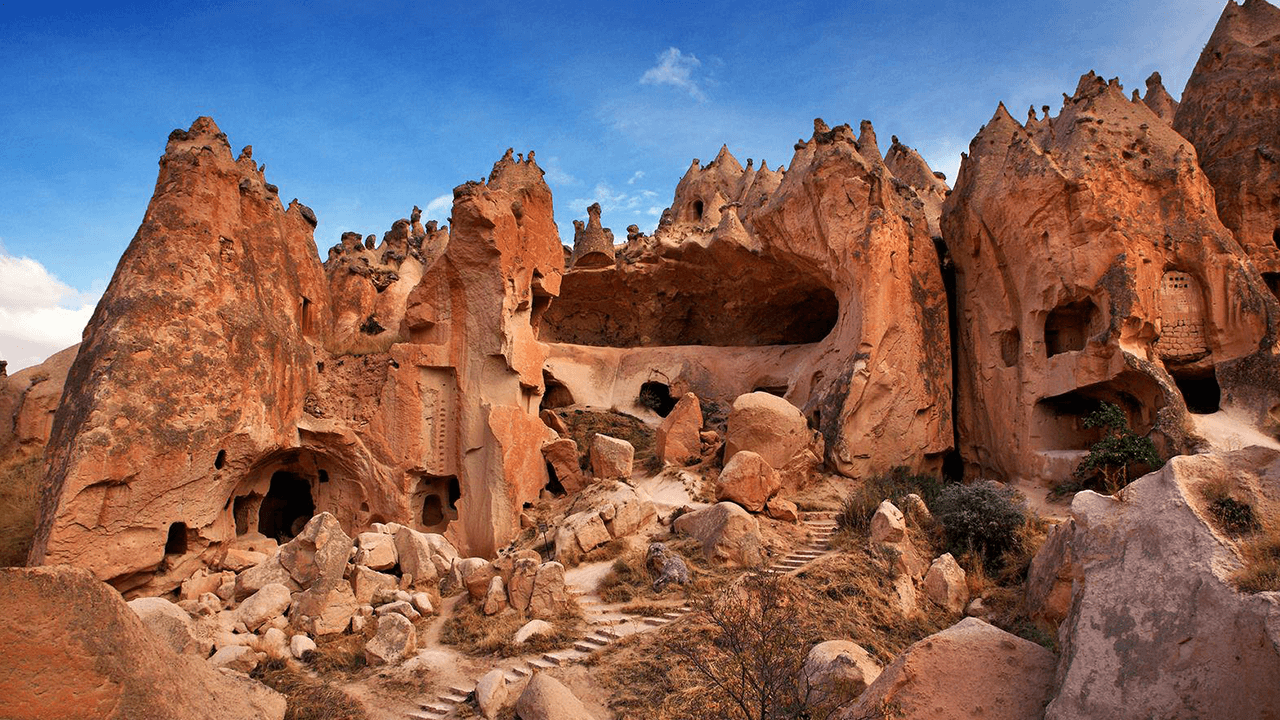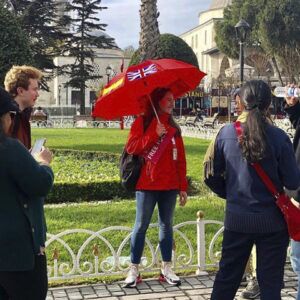Zelve Cappadocia: History, Culture, and Beauty in the Heart of Cappadocia
The ancient Zelve, once one of the largest communities in Cappadocia, is a fascinating site filled with history and natural beauty. This historic village, entirely carved into volcanic rock, resembled a giant beehive, comprising homes, chapels, and religious structures hewn from tuff. For centuries, Christians and Muslims coexisted harmoniously here until historical events altered its destiny.
A Village Carved into History
In 1924, as a result of the population exchange between Greece and Turkey, the Christians of Zelve left the area. Muslims began departing years later due to the danger of collapses caused by the natural erosion of the rock-hewn structures. By the mid-20th century, the last inhabitants had moved to a modern village known as “New Zelve.”
Today, ancient Zelve is a ghost village where erosion continues to reshape the landscape. However, thanks to conservation efforts, much of the area has been transformed into the Zelve Open-Air Museum, a must-visit destination for those exploring Cappadocia.
Zelve Open-Air Museum
The Zelve Open-Air Museum offers visitors the chance to explore the ruins of this historic village. The museum comprises three interconnected valleys filled with tunnels, chapels, homes, and pigeon houses. Every corner of the museum reflects the architectural skill and daily life of Zelve’s former inhabitants.
Main Attractions of the Museum
- Geyikli Kilise (Church of the Deer): Adorned with frescoes depicting crosses, fish, and deer, this church exemplifies Zelve’s artistic and religious richness.
- Mosque: Built over an old church, this structure symbolizes the peaceful coexistence of religions in the region.
- Uzumlu Kilise (Church of the Grapes): Decorated with grape cluster frescoes, this church reflects the agricultural cults prevalent in the region.
- Balikli Kilise (Church of the Fish): Its fish frescoes symbolize Christian faith and the tradition of baptism.
- Pigeon Houses: These structures, used to collect guano, testify to the agricultural and sustainable life of Zelve’s former residents.
Paşabağ: The Nearby Fairy Chimneys
A short distance from Zelve lies the breathtaking Paşabağ Fairy Chimneys, known for their unique beauty and multi-layered rock formations that seem to defy gravity. Also called the “Monks Valley,” this site offers a visual feast and is one of the most photographed spots in Cappadocia.
What to See in Paşabağ
- Multi-layered fairy chimneys: Some of these formations rise to impressive heights and display distinct rock strata.
- Chapels and hermitages: Carved into the fairy chimneys, these structures were used by monks for meditation and solitary living.
- Scenic trails: Perfect for exploring and enjoying panoramic views of the valley.
Tips for Visiting
- Visit duration: Plan at least half a day to explore Zelve and Paşabağ.
- Comfortable footwear: Wear sturdy shoes suitable for walking on uneven terrain.
- Stay hydrated: Bring water, especially during the summer months.
- Cameras: Cappadocia’s unique landscapes are perfect for photography.
How to Get to Zelve
Zelve is located about 10 kilometers from Göreme and Avanos. It is easily accessible by car, tourist bus, or guided tour. Many agencies offer tours that include both the Zelve Open-Air Museum and the Paşabağ area.
Conclusion
Zelve is more than a tourist destination; it is a window into Cappadocia’s past, where history, culture, and nature come together to offer an unforgettable experience. Its proximity to the Paşabağ Fairy Chimneys makes it an ideal spot for those wishing to explore the richness of this unique region. Don’t miss the opportunity to visit this fascinating open-air museum and uncover the secrets of a village that once stood at the heart of Cappadocia.



3 thoughts on “Zelve Cappadocia”
★★★★★
The charm of ‘Zelve Cappadocia’ captivated me entirely. It’s a destination that leaves no one indifferent.
★★★★★
Every moment spent at ‘Zelve Cappadocia’ was filled with wonder and learning. It’s a place I will always cherish.
★★★★★
Exploring ‘Zelve Cappadocia’ exceeded all my expectations. A perfect combination of culture, beauty, and knowledge.